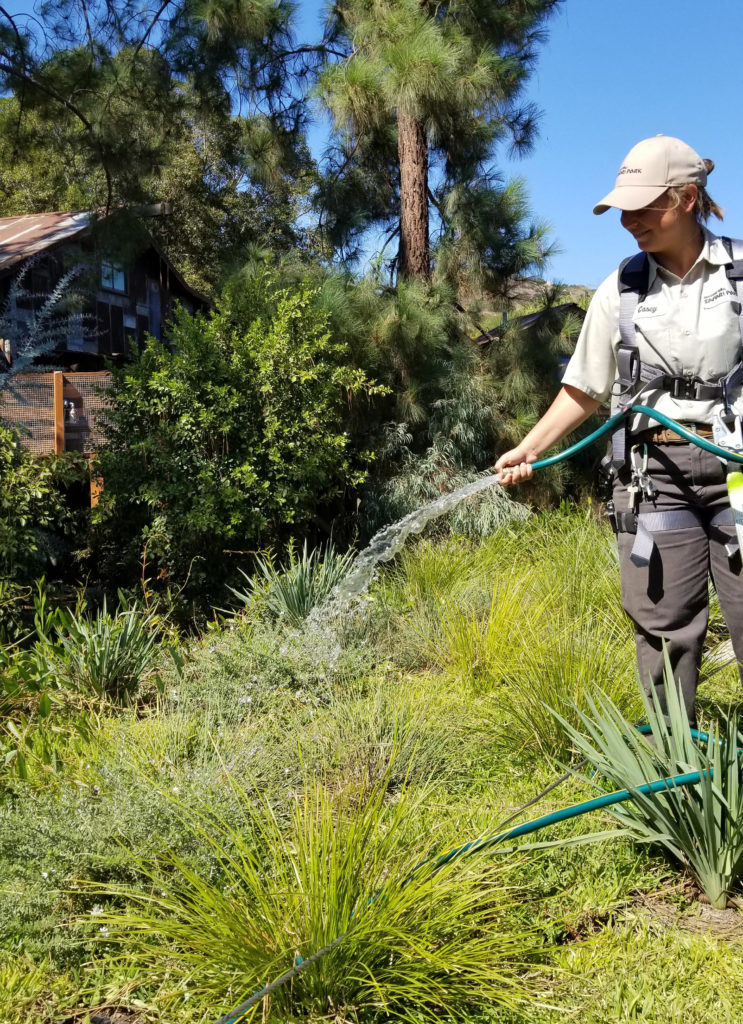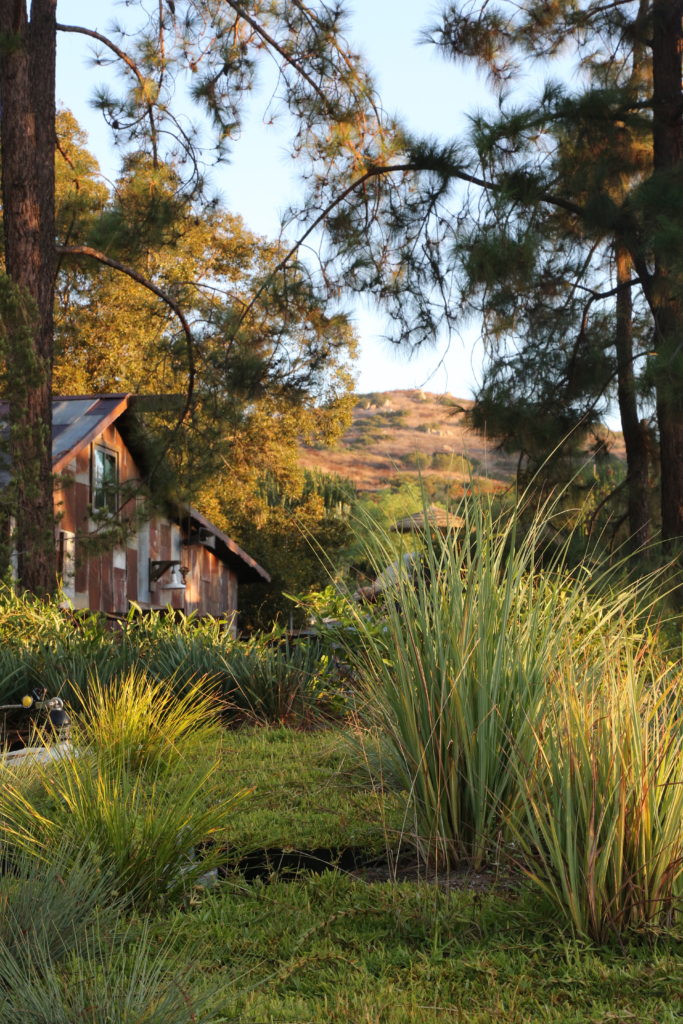
Walkabout Australia at the Safari Park is filled with many delightful plant and animal sights. Yet, when I’m showing someone the area for the first time, there’s one view in particular that I’m keen to point out. We stop near the tree kangaroo exhibit, with McClure pond below us and I tell guests to pivot their gaze a little bit to the left, toward Condor Ridge. Nestled between pine branches a short distance away—and seemingly floating in air—is an entirely different grassland than the one the ‘roos and wallabies enjoy.
One of the features that our architects engineered into our state-of-the-art platypus building was a pair of functioning green roofs. Plants and soil growing on the roof surface absorb the sunlight and heat. The large mass of live greenery helps keep temps mellow. By buffering the abrupt change in temperatures of the outside weather, the temperatures inside of the building benefit; the green roof helps stabilize temperatures inside the platypus habitat.

What’s cool about looking at the green roof from the elevated wooden walkway is that it brings low-growing plants up to eye level. Made up of tile-like planters, our green roof over the platypus habitat is capable of supporting a variety of grasses, sedges, vines, and herbaceous flowers. Breezy yellow-green Lomandra and blue Dianella are grass-like Australian natives that lend a calm vibe to this aerial landscape. Feathery Boronia and Grevillea add extra lightness, while frosty gray saltbush and shimmering Adenanthos contribute silvery hues.
If you’ve come to visit our new platypus friends recently, you might have noticed some of our green roof plants hanging over the edge of the building. The flowering vines at the bottom of the roof have taken exceptionally well to their lofty growing grounds. I’d been letting them grow wild on the roof during construction, but was not anticipating what an undertaking it would be untangling them be later on!
Securely fastened to safety cables running the perimeter of the roof, I can tend to the green roof plants as safely as if I was on the ground, including getting on hands and knees to pull out stubborn weeds. One of the funniest things to me has been the assortment of volunteer plants that sprout up on the roof. Some of the best have been tiny boojum trees, a hopseed, and a California native snapdragon. But, along with these classy would-be squatters come the obnoxious ones. Papyrus, one of our worst weeds, has repeatedly tried to get a foothold on the roof. I do my best to keep up with uprooting the weeds before they go to seed.

It’s really fun to see the spontaneous introductions that the birds and the wind bring to this island of a landscape. It makes me realize that we can add a carefully curated component of nature to something as seemingly isolated as a rooftop, but that the landscape itself will still be influenced by the surrounding environment. I enjoy the landscapes all around Walkabout Australia, but will admit I have a special fondness in my horticulturalist heart for the green roof—and am definitely looking forward to seeing what other surprises it has in store.
Casey Woodall is a horticulturist at the San Diego Zoo Safari Park.




